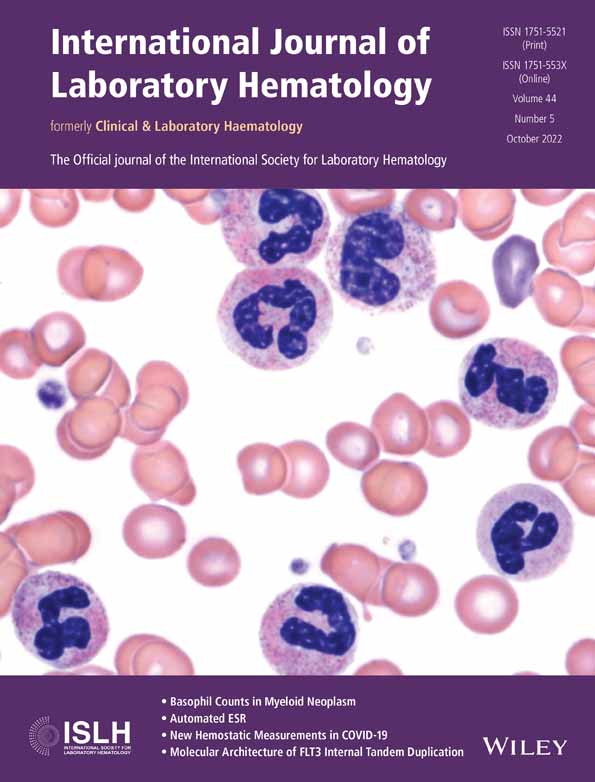Independent prognostic significance of TP53 mutations in adult acute myeloid leukaemia with complex karyotype
Abstract
Introduction
Adult acute myeloid leukaemia (AML) patients with complex karyotype (CK) generally have unfavourable outcomes. CK commonly co-exists with characteristic chromosomal and genetic abnormalities such as monosomal karyotype (MK), −17 or 17p- [abn(17p)] and TP53 mutations. Their individual prognostic significance needs to be clarified.
Methods
Seventy-three adult CK-AML patients and eleven adult non-CK-AML patients with TP53 mutations (non-CK/TP53mu) who were diagnosed and received therapy at our institute were enrolled. One hundred and fifty-seven AML cases retrieved from the cancer genome atlas (TCGA) for validation.
Results
Among CK-AML patients, those with TP53 mutations (CK/TP53mu) had significantly lower rates of 1-course induction complete remission (CR), 2-year relapse-free survival (RFS) and 2-year overall survival (OS) than those without TP53 mutations (CK/TP53wt); whereas, abn(17p) did not have the above impacts; MK was significantly associated with a lower 2-year OS rate but was not related to the rates of CR and RFS. Multivariate analysis showed that it were TP53 mutations and treating with chemotherapy alone but not MK and abn(17p) that independently predicted the adverse prognosis for RFS and OS in CK-AML. Furthermore, non-CK/TP53mu patients showed similar rates of CR, RFS and OS to CK/TP53mu patients. Validation using the TCGA cohort showed that CK/TP53mu patients had a significantly lower 2-year OS rate than CK/TP53wt patients, whereas abn(17p) and MK did not impact OS; the 2-year OS rate of patients with CK/TP53wt was similar to that of patients with intermediate-risk cytogenetics.
Conclusion
Adult CK-AML patients have varied risks and TP53 mutations seem to be an independent adverse prognostic factor.
CONFLICT OF INTEREST
The authors declare no conflict of interest.
Open Research
DATA AVAILABILITY STATEMENT
The data that support the findings of this study are available from the corresponding author upon reasonable request.




